Written By: Brad Campbell | February 14, 2024
Traditional commercial glass doors and windows are highly vulnerable to breakage, whether it’s due to a forced entry attempt, a flying piece of storm debris, or any other type of impact. This makes any commercial building’s weakest points its windows and doors.
From retail stores to government buildings, a commercial property is only as strong as these weak points — if a single window is broken, it can compromise the security of the entire building.
In order to mitigate the range of security threats that pose a risk to the safety and security of building occupants and property, commercial building and business owners should harden their properties with security windows and doors.
However, there are many potential solutions when it comes to reinforcing windows and doors in commercial buildings, so we put together this comprehensive guide to ensure you understand your options for doing so.
By the time you finish reading, you should have a stronger understanding of what security windows and doors are, the different types of solutions that exist, and how they work side-by-side with other commercial security measures to fortify buildings without making them look fortified.
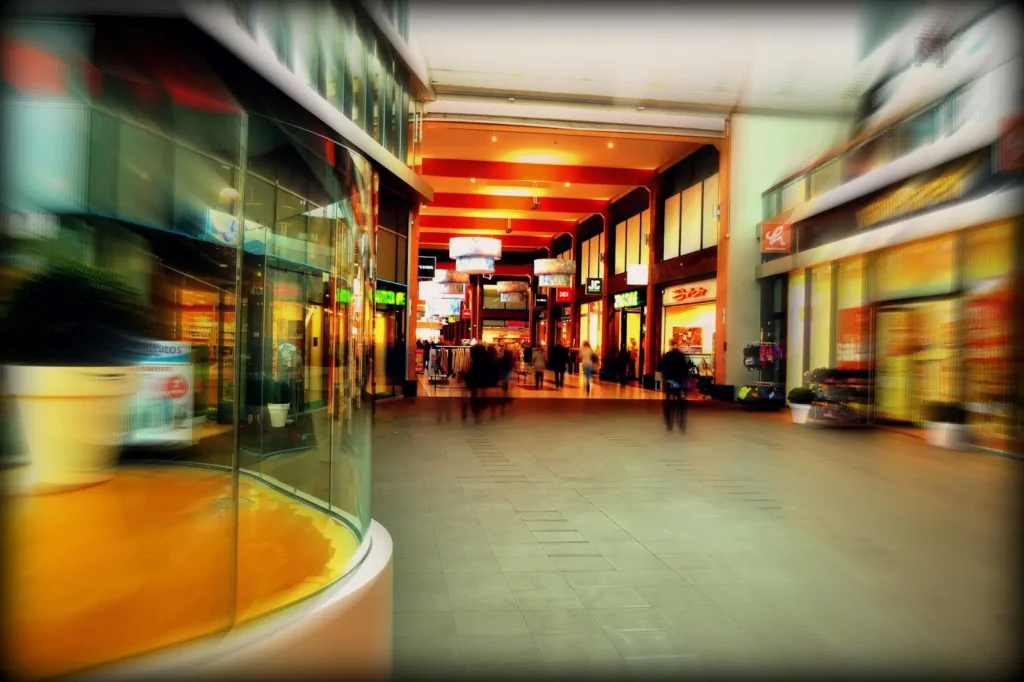
Before we jump into what security windows and doors are, let’s take a closer look at why they're necessary.
As we already touched on above, if a glass door or window is broken, it can compromise the security of an entire commercial building, and there are a lot of potential security threats that commercial properties face on a day-to-day basis. Here are the biggest ones:
All of these threats pose risks of property damage, loss of merchandise and/or equipment, and physical harm to building occupants, to varying degrees.
Naturally, not all commercial properties are equally at risk for all of the threats mentioned above.
For example, only businesses and facilities in certain regions are at risk for hurricanes and strong windstorms that can result in property damage.
As another example, threats like forced entry, burglary, smash-and-grab theft, while they can affect many different types of businesses, are more likely to affect retailers, especially luxury, high-end, and specialty retailers that carry high-value, easily re-saleable merchandise.
Despite their varied nature, there’s something that all these threats to commercial security have in common: they can be mitigated by installing security windows and doors.
In other words, securing your commercial property’s windows and doors against impacts protects against all of these threats to some degree, protecting people and property against physical harm, damage, and theft.
There’s no one-size-fits-all security solution to hardening a building’s security, but impact-resistant doors and windows are as close as it gets, and the good news is that these solutions can be easily retrofitted onto most existing buildings.
Impact-resistant security windows are made from some type of security glazing (glass or glass-like) materials, typically either laminated security glass, polycarbonate (non-glass) security glazing, or a mix of the two (i.e., glass-clad polycarbonate).
Depending on the specific formulation used, these materials can range from 100 times stronger and five times stiffer than traditional glass to virtually unbreakable.
Laminated security glass windows are composed of multiple layers of security glass laminated on top of thermoplastic interlayers, creating a single unified sheet that is highly resistant to impacts.
The primary benefit of laminated security glass is that it doesn’t shatter upon impact, like standard annealed glass and even tempered safety glass do.
Even if the laminated glass breaks, the thermoplastic interlayer holds the broken pieces together, preventing them from dispersing and reducing the risk of injury.
Laminated security glass is also designed to withstand forced entry attempts, making it more difficult for burglars or other intruders to penetrate a building. The multiple layers provide a barrier that resists breakage, slowing down and discouraging unauthorized access.
In retail or commercial settings, where visibility of merchandise is important, laminated security glass can be used to create high-security storefront windows and display cases that protect against smash-and-grab incidents.
Even if the security glass starts to break, the general integrity of the glass’s structure remains, making it challenging for thieves to quickly grab and escape with valuables.
Polycarbonate security windows are very similar to laminated security glass windows in terms of appearance and function, but they don’t contain any glass and instead boast the virtually unbreakable strength of polycarbonate.
Whereas laminated glass can still crack, spall, and eventually break after repeated impacts, polycarbonate is shatterproof. This makes polycarbonate security windows nearly impossible to break using traditional forced entry methods, providing an even higher level of protection than laminated security glass against forced entry, burglary, smash-and-grab theft, and active threats.
Despite its strength, polycarbonate is much more lightweight than laminated security glass, making it easier to handle and install. This can be advantageous in situations where weight considerations are important, such as when you’re retrofitting security window glass over existing glass.
Depending on the specific formulation and design, certain types of both laminated security glass and polycarbonate security windows can also provide varying levels of resistance to bullets, offering additional protection in high-security environments.
Glass-clad polycarbonate security windows are essentially a combination of the two solutions discussed above.
Glass-clad polycarbonate, or GCP, security glazing sheets typically feature laminated security glass on the exterior surface (the attack side) and polycarbonate on the interior surface (the safe side). This provides maximum safety for anyone on the inside of the glazing.
By combining laminated security glass and polycarbonate security glazing into a single sheet, you can achieve security windows with the surface hardness, scratch-resistance, and appearance of traditional commercial windows, but with the shatterproof strength and safety of polycarbonate.
Because of the polycarbonate, even if the exterior glass surface is damaged, the overall window structure remains intact, and is nearly impossible to dislodge under normal threat circumstances, such as a forced entry attempt using readily available tools and objects.
Additionally, because of its unique composition, glass-clad polycarbonate glazing can achieve some of the highest levels of bullet-resistance of all the solutions we’ve discussed.
Bullet-resistant high-security windows made from glass-clad polycarbonate can typically provide anywhere from UL 751 Level 1 ballistic resistance (can resist 9mm handgun attacks) to UL 752 Level 8 ballistic resistance (can withstand attacks from an AK-47 assault rifle).
It’s important to note that any type of bullet-resistant glazing can eventually be penetrated, either by a powerful enough firearm or repeated impacts.
However, security glazing that contains polycarbonate can get riddled with bullets and still act as a barrier to forced entry, preventing attackers from getting inside and causing harm to building occupants. This makes it the preferred solution for active threat mitigation in schools, government buildings, religious facilities, and other high-risk commercial properties.
There are three main ways that security glazing can be installed into or onto windows:
The most cost-effective way to install security glazing is to mount it on top of the existing window glass, either in front of (overglazing) or behind (backglazing) it.
This can be done using specialized retrofittable framing adapters that attach to a window’s existing framing system, holding the new security glazing firmly in place on top of the existing glass and protecting it from impacts and breakage.
This is a very time- and budget-friendly approach to fortifying commercial windows against threats. However, it’s not always possible — if the desired security glazing is too thick and heavy, it might not be suitable for this type of retrofit solution.
In situations where retrofitting security glass on top of the existing glass isn’t possible or desirable it can also be used to replace the existing glass.
This process involves removing the existing glass windows and putting the chosen type of security glass in their place.
The process is essentially the same as replacing a building’s windows with any type of new windows, so it’s naturally going to be more time consuming and expensive than overglazing or backglazing.
In new construction projects, it’s also an option to install security windows right from the beginning.
In fact, more and more architects and building owners are starting to design their buildings with security glass in them, not only because it increases commercial building security and safety, but also because security glazing can be more sustainable than other types of commercial glass.
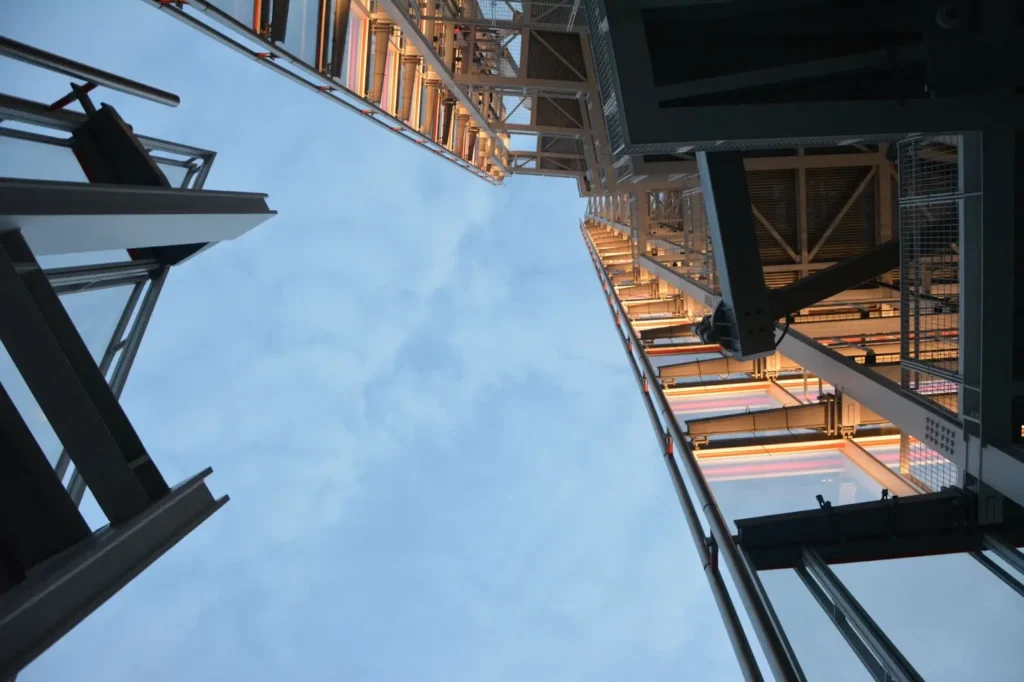
Using security windows in new construction provides a few key advantages over retrofitting them. For starters, their cost replaces the cost of regular windows, so installing them doesn’t add more expenses down the road. Installing security glazing in commercial buildings during their initial construction also means there is no disruption to building occupants later on.
Although there’s no such thing as metal security windows (they wouldn’t be windows anymore), certain security glazing products are so strong that they’ve become known as liquid steel security windows. This is because they are as capable of resisting impacts as a sheet of steel.
There are also metal security window shutters and gates that can be rolled down in front of or across windows and locked into place.
These types of products are effective at providing after-hours protection against forced entry, burglary, smash-and-grab theft, and other threats for certain types of businesses, particularly retail stores with large glass storefronts and display windows.
Since they mainly provide security when businesses and facilities are closed, metal security window shutters are best used in tandem with an “always-there” solution, such as one of the window security glazing options we’ve gone over.
Now that you have a better understanding of security windows, including the different types of glazing that can be used to make them and how they can be installed, you might be wondering how glass security doors work.
Well, glass doors can be converted into security doors in much the same manner as windows can be converted into security windows.
Converting glass doors into impact-resistant, forced entry-resistant, and even bullet-resistant doors can be done using the same types of security glazing we went over above. The installation process may vary slightly depending on the type of commercial glass door you’re dealing with.
For example, for glass doors with metal frames, you may be able to retrofit security glazing right on top of the existing glass using retrofittable framing adapters. If not, you may also be able to replace the existing glass with security glazing.
When the highest level of security is desired for commercial entryways and their glass doors, an unbreakable door conversion kit is another option available to you.
These conversion kits consist of forced entry-resistant security framing plus forced entry- and bullet-resistant security glazing infills, providing an incredibly high level of resistance against even the most determined, violent attacks.
When used alongside high-security windows, an unbreakable door conversion unit ensures that a storefront’s or facility’s whole facade can resist a prolonged attack by a group of would-be intruders, such as a mob of rioters attempting to force entry to damage and loot a business.
The benefits of commercial security windows and doors extend far beyond protecting people and assets. For example, security glazing for doors and windows can:
Because security glazing can often be retrofitted over existing glass, it can essentially turn a single-pane window into a double-pane window, or a double-pane window into a triple-pane one.
Adding a pane of glazing improves energy efficiency by creating a sealed space between the glass, which provides additional insulation to reduce solar heat gain (heat from the sun that passes through windows) and prevent air from heating and cooling systems from escaping out the window.
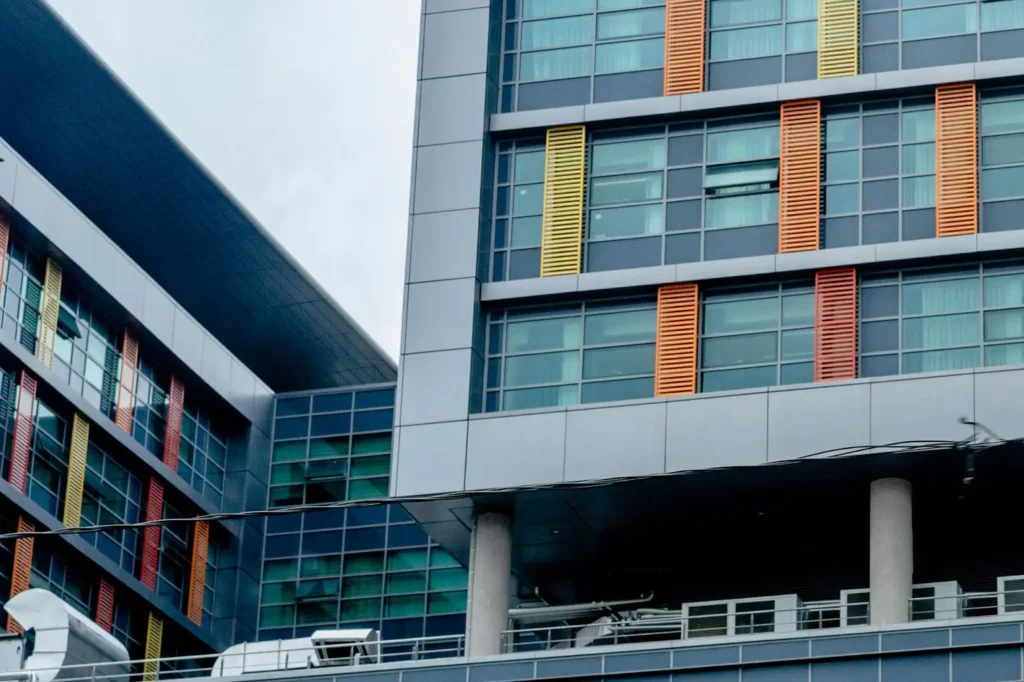
Ultimately, this makes it easier to maintain the temperature you want inside commercial spaces, without needing to rely so much on constantly running air conditioning or heating systems. This can greatly increase the energy efficiency of commercial buildings and lead to lower utility bills for both building occupants and owners.
Security glazing can also be treated with a special low-emissivity (low-e) coating, which greatly improves their energy efficiency and provides similar benefits to adding a pane of glass, including reducing solar heat gain and the need for air conditioning.
For the same reasons that adding a sheet of security glazing over existing glass improves energy efficiency, it also helps with sound attenuation, or reducing the amount of outdoor noise that’s transmitted through glass doors and windows.
This is particularly beneficial for commercial properties near busy roads, airports, train tracks, industrial areas, or anywhere else with a lot of exterior noise that distracts from work and other activities.
With special coatings, security windows and doors can significantly reduce glare, making them ideal for improving indoor working conditions in facilities and offices with large amounts of windows where people are often working on computers or performing other duties nearby.
Security glazing can reduce glare without blocking out natural light or reducing visibility, so building occupants can continue to benefit from natural light transmission and enjoy views of the outdoors, both of which are shown to contribute to productivity and overall happiness.
Since security glazing for windows and doors can improve their energy efficiency, it also makes it easier to maintain comfortable indoor temperatures, no matter what the temperature outside is.
This results in happier building tenants and can even have a positive effect on keeping building occupancy rates high.
Security windows and doors can also provide extremely high levels of protection against harmful and damaging UV rays — certain types of security glazing can even block out up to 99.9% of UV rays!
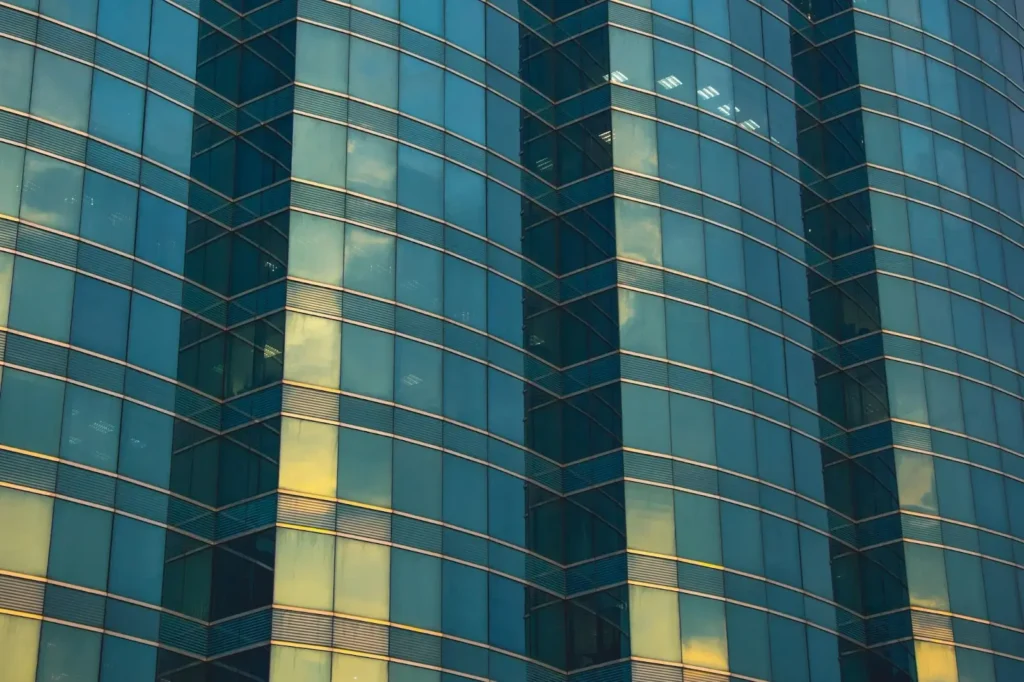
This greatly prolongs the lifetimes of furnishings that would normally fade because of exposure to the sun through windows, as well as mitigates potential health risks for people working near windows.
While security glazing is crystal-clear by default (and won’t block out natural light or block views), it can also be given various tinted or reflective coatings to add daytime privacy to commercial facilities.
For instance, reflective security glazing creates a one-way mirror effect when the light is brighter outside than inside. In other words, during the daytime, passersby or criminals can’t see in, but building occupants can still see out.
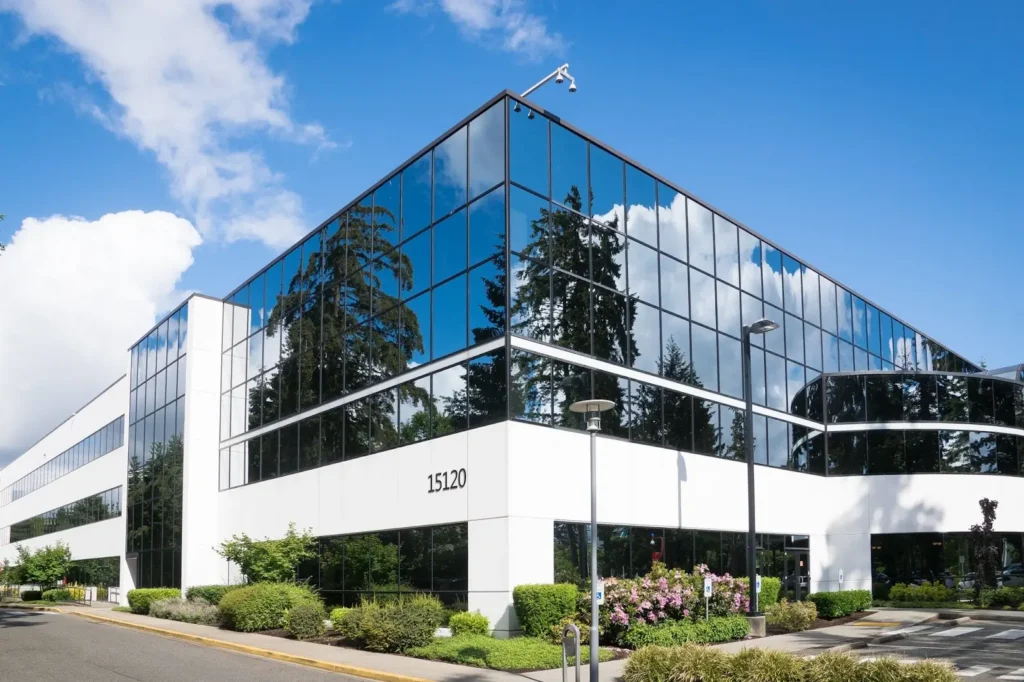
This added privacy is ideal for commercial spaces where confidentiality is a concern, or where more privacy simply creates more comfortable working conditions, such as in ground floor office spaces.
Additionally, making it harder to see inside of a business can deter would-be thieves, as they can’t see if there’s anything worth stealing on the other side of the glass.
Besides adding privacy, different types of finishes and tints for security windows and glass doors can also improve the aesthetics of commercial properties.
For example, installing mirrored security glazing over an outdated office building’s glass doors and windows can bring it more into line with more contemporary buildings around it, improving its curb appeal.
Such aesthetic improvements can be a cost-effective way to attract more building tenants, clients, or customers.
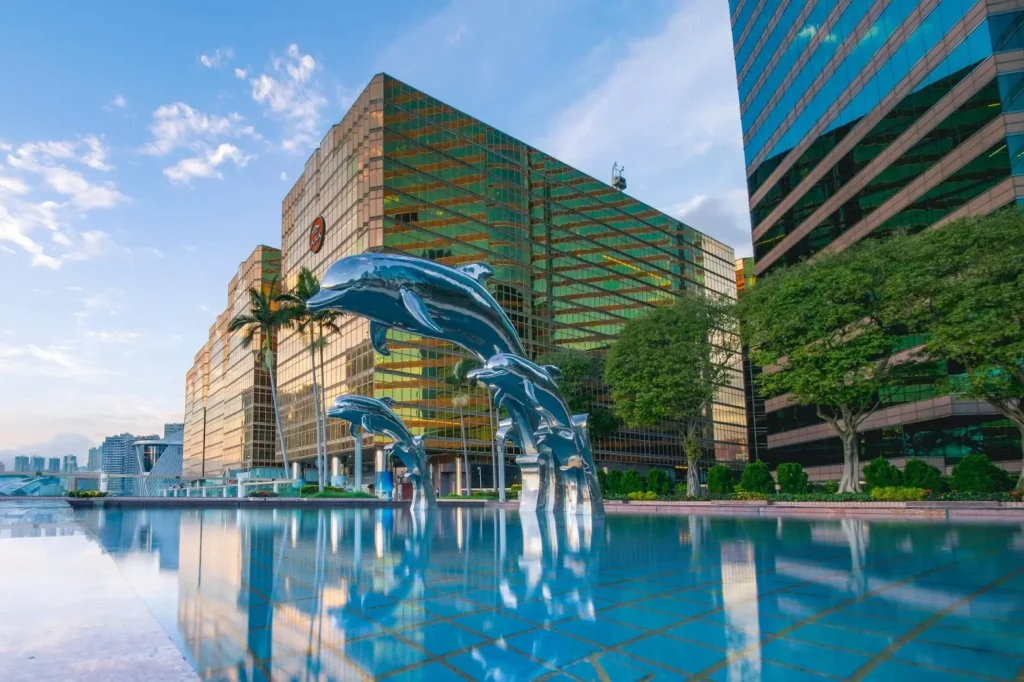
For commercial building owners, a high net operating income is the goal, and security glazing can contribute to a higher NOI because of all the other benefits we’ve already mentioned.
Prospective building tenants looking to rent a commercial space value things like safety and security, energy efficiency, comfort, privacy, and curb appeal, all of which are things that the right security glazing can provide.
So, by retrofitting or installing security windows and doors, you’re giving your commercial property a competitive edge that can help keep it full of tenants and keep your NOI high.
Beyond that, the increased energy efficiency that certain types of security glazing provide can decrease overall operating costs for commercial buildings, thus contributing even further to your net operating income.
A comprehensive understanding of security windows and doors is crucial for fortifying commercial buildings against a myriad of threats, without making them look fortified, and we hope this guide has given you just that.
By now you should understand that traditional glass openings represent major vulnerabilities, making windows and doors the weakest points in a building's security.
Through the use of various security glazing solutions, such as laminated security glass, polycarbonate security glazing, and glass-clad polycarbonate security windows and doors, it’s possible for any commercial property to achieve high-security windows and doors.
Retrofitting or installing security glazing into or onto a building’s glass doors and windows mitigates serious threats like forced entry, burglary, smash-and-grab theft, vandalism, rioting and looting, and active threats. It also protects buildings in at-risk areas from storm damage and other natural disasters.
The different installation methods available for security glazing, including overglazing/backglazing, replacing existing glass, and new construction installation, offer flexibility for cost-effectively improving commercial security in a range of different scenarios.
Security windows and doors can also contribute beyond boosting safety and security, offering benefits such as better energy efficiency, noise reduction, glare reduction, more indoor comfort, UV protection, added privacy, and aesthetic improvements.
Ultimately, investing in security windows and doors not only safeguards people and assets, but also enhances a commercial property's overall appeal and long-term success.
Riot Glass, LLC offers a full range of security glazing solutions for securing commercial windows and doors.
We can work with building owners, business owners, contractors, architects, and other stakeholders to provide the optimal solution for your specific needs, goals, and budget.
Contact us today for a consultation.

HOW CAN WE HELP YOU?
